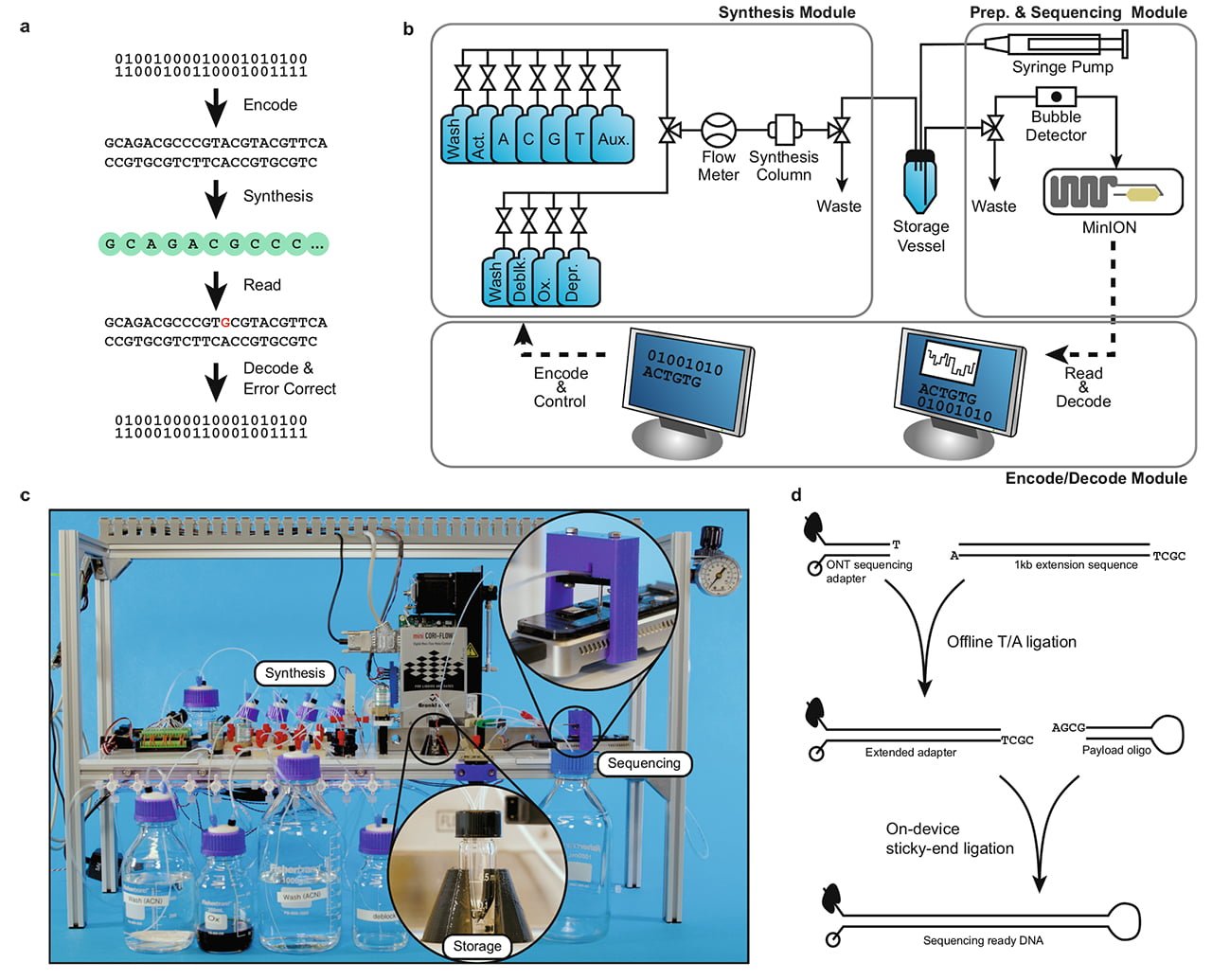It’s no secret that our DNA is unique in many ways, and one of those ways includes being able to store tremendous amounts of data. Microsoft collaborated with the University of Washington to demonstrate fully automated DNA data storage, which is an important step in the technology development for research labs and commercial data centers.
Researchers from the team managed to successfully save the word “hello” in snippets of fabricated DNA and then converted it back into digital data using an automated end-to-end system. The study was described in the study published in Nature Scientific Reports.
The collaborating team was exploring ways to fill in the gap between the tremendous amount of data we’re dealing with on a daily basis and finding a capacity which can store that data. To fill in the gap, researchers produced algorithms and molecular computing technologies which could encode and retrieve data.
“Our ultimate goal is to put a system into production that, to the end user, looks very much like any other cloud storage service—bits are sent to a data center and stored there and then they just appear when the customer wants them,” principal researcher Karin Strauss, a UW affiliate associate professor in the Paul G. Allen School of Computer Science and Engineering and a senior researcher at Microsoft said in a statement. “To do that, we needed to prove that this is practical from an automation perspective.”
That’s what inspired researchers to develop a fully automated DNA storage consisting of DNA molecules generated in the lab. That said, the system can be encrypted before it gets sent to a computer system.
However, the researchers needed to find a way to make the system work as a commercial storage solution, and the first of the necessary things to be done was to decrease the cost for both synthesizing DNA and the sequencing process that is used for extracting the information. According to the researchers, new technology trends suggest that there’s already progress toward that direction.
If the solution becomes properly developed, DNA could last much longer as opposed to the traditional storage drives like hard disks and solid-state drives which will degrade in less than a decade. They modeled the original DNA contained in living creatures, noting that DNA persisted in not so perfect conditions for thousands of years in mammoth tusks and bones of the earliest humans on Earth, so should be relevant for a long time yet.
Software that it uses can convert binary numbers of digital data into As, Ts, Cs, and Gs which are the building blocks of DNA as we know it.
“We are definitely seeing a new kind of computer system being born here where you are using molecules to store data and electronics for control and processing. Putting them together holds some really interesting possibilities for the future,” said UW Allen School professor Luis Ceze.
The DNA data storage is much different compared to the silicon-based computers because they need to use different liquids for molecules to be in motion. Liquids, unlike electrons, move differently and need new engineering methods to be put to work. In the future, the team behind the DNA data storage hopes to see development of a simple end-to-end system which can automate lab experiments.





